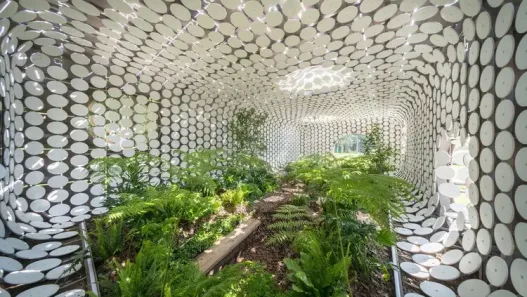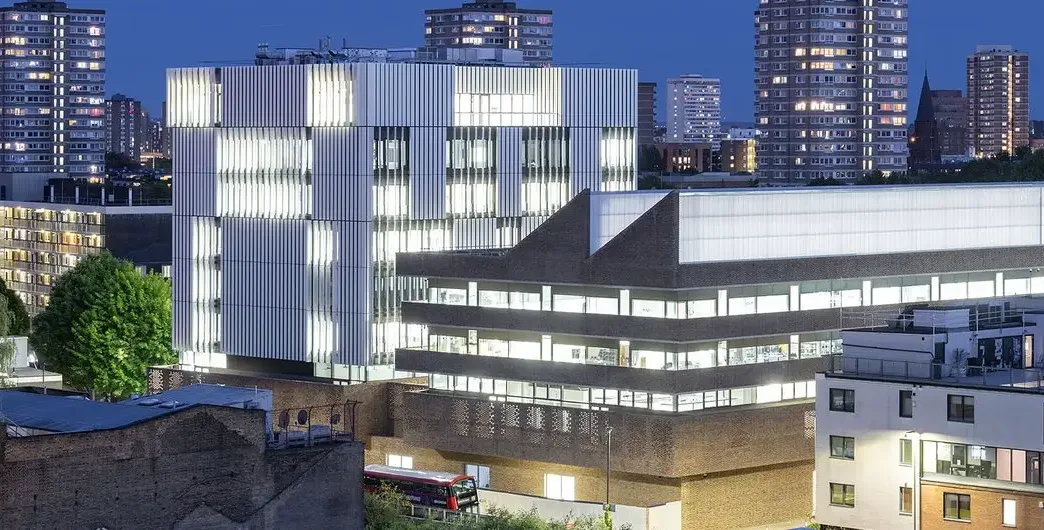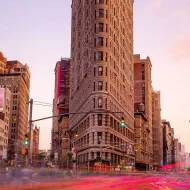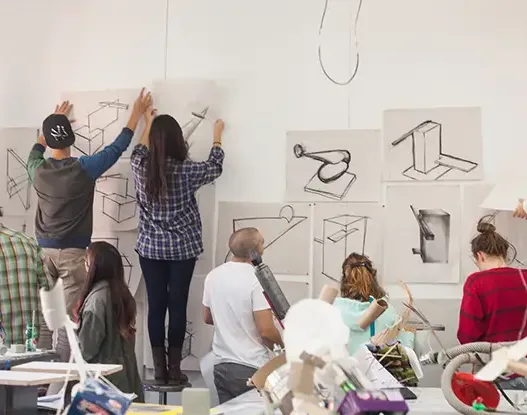Royal College of Art (RCA) stands as a sign of creativity and innovation in the field of higher education, especially in the fields of art and design. LondonThis prestigious institution has gained a place by nurturing artistic talents and encouraging groundbreaking ideas. Architecture programs that blend theory and practice to equip students with the skills needed to address contemporary challenges in the built environment are particularly noteworthy.

History and organization
Royal College of Art, founded as Government School of Design, has a rich history full of the evolution of art and design education. In 1967, the college made the transition to its current name, which reflects its commitment to advance the fields of art and design at a higher level. RCA has maintained its validity in a rapidly changing world by adapting to cultural changes and technological developments over the years. The institution has played an important role in shaping architectural education by emphasizing the importance of a holistic approach that combines artistic vision with practical application.
Mission and vision
RCAAt the center of its mission is dedication to promoting creativity and innovation. The college aims to develop critical thinking and artistic discovery by encouraging students to challenge traditional borders. Vision focuses on raising visionary leaders who can influence the future of architecture and design, going beyond just raising architects. RCA encourages an environment where experimentalism develops and encourages students to deal with social issues and environmental challenges through architectural practices.
Importance in architectural education
Royal College of Art, UK onlyIt has an important place in architectural education, not all over the world. His approach emphasizes interdisciplinary cooperation, taking insights from various fields such as art, engineering and urban studies. This integrative model enables students to explore architecture not only as a discipline but also as a tool for social change. RCAThe importance given to research-oriented education allows students not only to be resourceful in design, but also to be equipped to overcome urgent global problems such as sustainability and urbanization.
Overview of offered programs
RCA offers a number of programs that cater to different interests in the field of architecture. The college offers a comprehensive curriculum that promotes discovery and innovation, from the master’s program to specialty courses in urban design and spatial applications. Students benefit from a mix of theoretical study and applied projects, often collaborating with industry professionals and participate in real-world challenges. This dynamic learning environment prepares graduates to enter the professional world with a portfolio of confidence and robust work.
Notable graduates and their contributions
Royal College of ArtThe influence of . Names such as Sir David Adjaye and Zaha Hadid, both of which shape contemporary architecture with their innovative designs, RCAemphasizes the influence of educational philosophy. These graduates exemplify the university’s determination to train transformative thinkers who push the limits of what is possible in architectural design, not just talented architects. Their work continues to inspire the new generation of architects and reinforce the importance of creativity and vision in shaping our built environment.
As a result, the Royal College of Art continues to be a vital institution in the field of architecture education by promoting creativity and vision among its students. Its rich history, its commitment to innovation and its impressive graduate network underline its importance as a leader in the training of new generation architects. Through its programs, RCA not only provides education, but also inspires, ensuring that the future of architecture is bright and full of potential.
Architectural Design and Facilities
Royal College of Art (RCA) stands out as a sign of innovation and creativity, especially in the field of architectural design. Facilities are not just learning areas; They are living ecosystems that nurture the artistic expressions of students and encourage cooperation. RCAEach element of its architecture and facilities is carefully designed to inspire and attract attention, making the university a unique environment for newly trained architects.
Main building architecture
Royal College of ArtIn its main building is a striking example of contemporary architectural design. It exhibits a dynamic interaction of forms and materials by blending functionality with aesthetic appeal. Architecture is characterized by bold lines and innovative use of glass, which allow natural light to fill the interiors. This design philosophy emphasizes transparency in both the real and figurative sense, promoting open exchange of ideas between students and faculty members.
The layout of the building is consciously created with areas that promote interaction and cooperation. Corridors and common areas are designed to feed the community feeling by bringing students together. Architecture not only serves practical purposes, but also inspires creativity and makes every corner a potential source of inspiration.
Innovative interiors
RCAThe interiors are equally impressive. Each room is designed to allow for a variety of activities, from group discussions to solo projects. Classes are equipped with movable furniture and flexible layouts that encourage students to reorganize their environment in accordance with their creative processes.
Also, the use of color and texture in the interiors stimulates the senses and inspires creativity. Walls often showcase student work, turning corridors into galleries celebrating ongoing projects. This approach not only improves the learning experience, but also instills a sense of pride and ownership among students.
Sustainable design practices
Sustainability, RCAIt is one of the cornerstones of the architectural philosophy of The institution is committed to minimizing its environmental impacts through innovative design practices. From energy-saving systems to the use of recycled materials, every aspect of the university’s architecture reflects its commitment to sustainability.
The buildings are equipped with green roofs and living walls, which not only improves air quality, but also provides students with a hands-on understanding of sustainable practices. These elements serve as a living laboratory for students, enabling them to explore sustainable design principles in real-world applications. RCA not only teaches about sustainability; He embodies this in every brick and beam.
Studio and workshop environments
RCAThe studio and workshop environments in the city are designed to be the center of creativity and experimentation. These areas are equipped with state-of-the-art tools and resources that enable students to bring their ideas to life. Whether it is wood workshops, digital production laboratories or design studios, each environment is designed to support a wide variety of creative efforts.
In these studios, students collaborate on projects, share techniques, and learn from each other to promote a collective learning culture. Workshops are often filled with an activity filled with the sounds of tools and the excitement of creation. This hands-on approach not only develops technical skills, but also nurtures a sense of community among students.
Technology integration in design
RCAThe integration of technology into the design process is transformative. Students are encouraged to use the latest software and tools that develop their design skills. From 3D modeling to virtual reality, technology plays a very important role in the way students conceptualize and visualize their work.
This emphasis on technology also prepares students for the future of architecture, where digital competence is a must. Students learn to push the limits of traditional design, discover new possibilities and produce innovative solutions to architectural challenges by involving advanced technologies in their projects. Thus, RCA is at the forefront of architectural education by equipping its students with the skills required to be successful in an ever-evolving sector.
As a result, the Royal College of Art is not just an educational institution; It is a vibrant ecosystem that promotes creativity, innovation and cooperation in architectural design. Thanks to its carefully designed facilities, RCA offers an inspiring environment where future architects can thrive, learn and ultimately leave their mark on the world.
Impact on the architectural community
Royal College of Art (RCA) stands as a sign of innovation and creativity in the field of architecture. Its influence extends far beyond the walls of its reputable institution and shapes the architectural community in a multi-faceted way. RCA not only trains new generation architects, but also interacts dynamically with the wider architectural environment.
Collaborations with industry leaders
RCAOne of the most important ways to influence the architectural community is through its collaborations with industry leaders. Establishing partnerships with well-known architects, design firms and construction companies, RCA ensures that students are invaluable to real-world applications. These collaborations often result in joint projects that force students to think critically and creatively. For example, students can work with leading architects in sustainable design initiatives or urban transformation projects, allowing them to apply their theoretical knowledge in practical environments. This interaction encourages a unique exchange of ideas, enabling students not only to master their craft, but also to be aware of current trends and challenges in the industry.
Hosting workshops and seminars
RCA is known for its lively academic environment enriched with regular workshops and seminars. These events invite professionals from various fields to share their insights and experiences. Students participate in practical activities that promote experimentation and innovation. For example, a workshop on digital production can introduce students to the latest technologies, enabling them to create complex architectural forms that were never even imagined before. Such experiences enrich the educational journey, inspiring students to push the boundaries and discover new methodologies in architecture.
Contributions to urban development
RCA plays a crucial role in urban development and often leads initiatives that address urgent social issues. Faculty members and students are involved in projects aimed at improving urban areas, increasing community participation and promoting sustainability. For example, RCA-led initiatives may focus on revitalizing little-used public spaces or integrating green spaces into urban environments. These contributions not only benefit local communities, but also make models for other cities facing similar challenges. By actively participating in urban development, RCA strengthens the idea that architecture is not just about buildings, but about creating spaces that promote social interaction and well-being.
Research initiatives and publications
The research is based on numerous initiatives aimed at exploring emerging trends and technologies in architecture.is at the center of its mission. Lecturers and students contribute to a rich accumulation of knowledge that informs both practice and theory. RCA publishes journals and research articles that share these findings with the wider architectural community. This dissemination of information is very important as it leads to controversy and inspires further research. For example, studies on the impact of climate change on urban architecture can influence design practices globally, encouraging architects to adopt more sustainable approaches. RCAHis commitment to research not only improves educational opportunities, but also positions him as a thought leader in the discourse of architecture.
Role in architectural competitions
Architectural competitions are a vital aspect of the profession and RCA is actively participating in this arena. Students are encouraged to participate in various competitions that offer them opportunities to showcase their creativity and innovation. These competitions often address real-world challenges and allow students to propose solutions that may have a tangible impact. Winning these competitions or even participating in these competitions can significantly increase their career expectations, as they demonstrate the critical and creative thinking skills of students under pressure. In addition, the recognition obtained from such activitiesIt increases the reputation of the company and reinforces its determination to encourage talents in the architectural community.
As a result, the Royal College of ART has a profound impact on the architectural community with its cooperation efforts, educational initiatives, research contributions and active participation in competitions. The RCA not only trains talented architects by bridging the academy and industry, but also plays an important role in shaping the future of architecture. Its commitment to innovation, sustainability and social participation, RCAIt ensures that it continues to be a vital force in the world of architecture.
Student experience and opportunities
The Royal College of Art (RCA) is considered a sign of innovation and creativity, especially in the field of architecture. RCAThe students in the world dive into an environment that not only nourishes their artistic talents, but also equips them with the practical skills necessary to be successful in the competitive world of architecture. RCAThe student experience is versatile and offers a rich texture of learning opportunities that extend beyond traditional classroom environments.
Curriculum and learning approaches
RCAAt the core of Nin’s architectural program is a curriculum designed to inspire and force students. Learning approaches highlight a mixture of theoretical knowledge and practical application. Students develop an understanding of how design affects the built environment and participate in applied projects that allow them to experiment with materials and techniques. This experiential learning is complemented by critical discussions and theoretical frameworks that encourage students to think deeply about their designs.
The curriculum is dynamic and often adapts to the latest trends and technological developments in architecture. This flexibility allows students not only to learn established applications, but also to be at the forefront of innovative design. Interdisciplinary joint projects promote a holistic understanding by emphasizing the intersections of architecture with art, sustainability and urban planning. This comprehensive educational philosophy prepares students to become versatile architects who can overcome complex challenges in their future careers.
Mentoring and Guidance Programs
One of the highlights of the RCA experience is the strong mentoring and guidance programs offered to students. Each student is paired with experienced mentors, who are not only successful architects, but also passionate educators. These mentors provide invaluable information about the profession of architecture by giving advice on design strategies, career paths and personal development.
Mentoring goes beyond academic guidance; It promotes relationships that can lead to future collaborations and opportunities. Students benefit from one-on-one sessions where they can discuss their projects, receive constructive feedback and develop their ideas. This personalized support system helps students move forward in the challenging environment of architectural education, enabling them to be confident and well-equipped to pursue their vision.
Internships and workplaces
RCA puts a strong emphasis on real-world experience through internships and job placements. These opportunities allow students to immerse themselves in professional environments and learn firsthand about the architectural industry. Whether they work in well-known companies or take part in community-based projects, students can apply their skills in practical environments and bridge the theory and practice.
RCAInternships are usually organized according to the interests of students and enable them to explore various aspects of architecture, from urban design to sustainable building applications. These experiences not only improve their portfolios, but also facilitate networking with industry professionals. Such links are very valuable and often lead to post-graduate job offers or joint projects, RCAIt reinforces the commitment of the student to the success of the student.
Student projects and exhibitions
RCAIt is also vividly exhibited through creativity, student projects and exhibitions. Each year, students present their work in a variety of formats, including installations, models, and digital presentations. These exhibitions create a platform for students to express their unique perspectives and innovative designs and attract industry leaders, critics and the public.
Projects often address urgent social and environmental issues and RCAIt reflects the philosophy that architecture should not only serve aesthetic functions, but also contribute positively to society. By participating in these exhibitions, students gain a valuable experience in curating their work and expressing their design philosophies to different audiences. This not only improves communication skills, but also increases their confidence as developing architects.
Networking and community participation
Networking is an integral aspect of the RCA experience with numerous events designed to bring students together with alumni, industry professionals and potential employers. Workshops, guest conferences and networking activities encourage a vibrant community where ideas can develop and collaborations can emerge. These interactions are not only operational; They establish permanent relationships that enrich students’ educational journeys.
Moreover, RCA encourages social participation and directs students to participate in local projects that address social needs. By working closely with communities, students gain insight into real-world challenges and learn how architecture can be used as a tool for positive change. This emphasis on social responsibility develops a sense of purpose and motivates students to become architects who prioritize not only design perfection but also society’s well-being.
In summary, the Royal College of ArtTAI is a harmonious mix of student experience, rigorous academic education, practical experience and social participation. Students RCADan emerges not only as talented architects, but also as thoughtful leaders who are ready to make a meaningful impact on the world.
Royal College of Art (RCA) is the pioneer of innovation and creativity in architectural education. Having a rich history and determination to push the limits of design, RCA trains new generation architects who are equipped to cope with the complexities of modern society. This research explores the orientations of the future in architectural education by emphasizing how developing pedagogy, interdisciplinary approaches, digital innovations, global perspectives and preparation for emerging challenges shape tomorrow’s architects.
Future orientations in architectural education
Looking to the future, architecture education is undergoing a transformative change. Traditional models are evolving to embrace new methodologies that reflect the dynamic nature of the built environment. This evolution is very important as it prepares students not only to design buildings, but also to relate to the world around them in a meaningful way.
Trends in architectural pedagogy
Contemporary architectural pedagogy emphasizes experience. Students are increasingly encouraged to dive into applied projects that directly associate themselves with real-world challenges, rather than assimilating theoretical knowledge. This change fosters critical thinking and problem-solving skills. For example, workshops and design-production projects develop a sense of social responsibility and a user-centered design approach by enabling students to cooperate with communities. RCA exemplifies this approach, integrating practical experiences with academic rigor, enabling graduates to be versatile and ready for the complexities of their profession.
Emphasis on interdisciplinary studies
Today’s architectural problems often intersect with various fields such as urban planning, environmental science and sociology. For this reason, architectural education is moving towards an interdisciplinary model. RCAStudents are encouraged to cooperate with their peers from different disciplines, enriching their perspectives and expanding their skillset. This collaboration leads to innovative solutions that take into account various factors such as sustainability and cultural context. The architects of the future can create not only aesthetically pleasing but also socially and environmentally responsible designs by adopting different perspectives.
Innovations in digital design
The integration of digital technologies into architectural education is revolutionizing students’ approach to design. Advanced software tools and simulation technologies allow architectural ideas to be expressed in a more complex and creative way. In institutions like RCA, students can learn to take advantage of these tools and visualize their concepts in a gripping way. Virtual reality and parametric design are not just fashion words; They become the main components of the design process. This innovation develops creativity, allowing students to try forms and materials in ways that cannot be imagined before and push the boundaries of traditional architecture.
Global perspectives in architecture
In an increasingly interconnected world, architectural education is expanding to include global perspectives. RCA recognizes the importance of understanding different cultural contexts and design philosophies. Students are interested in international case studies and expand their understanding of the role of architecture in various social frameworks by participating in global design struggles. This global focus not only enriches their education, but also prepares them to work in different environments. Graduates emerge with a subtle understanding of how architecture can respond to local needs while being aware of global trends.
Prepare for emerging challenges
As society faces urgent problems such as climate change, urbanization and social inequality, architectural education should adapt to prepare students for these facts. RCA actively incorporates sustainability and stamina into its curriculum, teaching students to not only meet aesthetic and functional needs, but also design buildings that contribute positively to the environment. By emphasizing research and innovation, RCA ensures that its graduates are equipped to fight the emerging challenges of the future and leads in creating sustainable, inclusive and forward-thinking designs.
As a result, the Royal College of Art is an example of how architectural education is transforming to meet the demands of the changing world. Focusing on experiential learning, interdisciplinary cooperation, digital innovation, global perspectives and awareness of emerging challenges, RCA not only trains architects; It raises visionaries who will shape the future of our built environment. This holistic approach enables graduates to become not only talented designers, but also compassionate and knowledgeable citizens, ready to make a positive impact.
Conclusion and thoughts
Summary of key points
The Royal College of Art (RCA) is recognized as the pioneer of innovation and creativity in the world of architecture. Throughout its history, RCA has created a unique environment where architect candidates can explore their artistic visions while grounding their ideas with practical applications. The importance given to interdisciplinary cooperation develops architectural understandings as a holistic application, enabling students to interact with various forms of art and design. Blending theoretical knowledge and practical experience prepares graduates to overcome real-world challenges with confidence and creativity.
RCA in shaping future architectsrole of
RCAThe educational approach is based on the promotion of a culture of experimentation and critical thinking. Students are encouraged to push boundaries and discover unusual ideas in a rapidly evolving area. RCAThe mentoring and individualized feedback commitment plays a very important role in shaping the new generation of architects. Most of the time, faculty, who are also successful practitioners themselves, provide invaluable insights that help students refine their concepts and develop their unique architectural sounds. This nourishing environment not only develops technical skills, but also instills a sense of responsibility and ethical thinking in future architects.
Long-term impact on the profession
RCAThe effect of the sinews extends far beyond the campus. The graduates of the program step into the professional world not only with skills, but also with a mentality of sustainability and innovation. Graduates are often at the forefront of addressing current issues such as climate change, urbanization and social equality in design. By emphasizing a forward-thinking approach, RCA prepares well-equipped architects not only to design buildings, but also to create spaces that promote society, prosperity and endurance. The long-term impact is evident in the way these architects contribute to the shaping of both functional and inspiring cities and environments.
Final Thoughts on Architectural Education
Architectural education is more than just learning to draw and build, especially in institutions like RCA. It is the discovery of the cultural, social and environmental contexts in which architecture exists. RCAThe holistic approach enables students to develop a broader understanding of their roles as architects by encouraging them to establish in-depth relationships with these contexts. This training prepares graduates to be thoughtful leaders in the field by emphasizing creativity, critical analysis and a strong ethical basis.




















